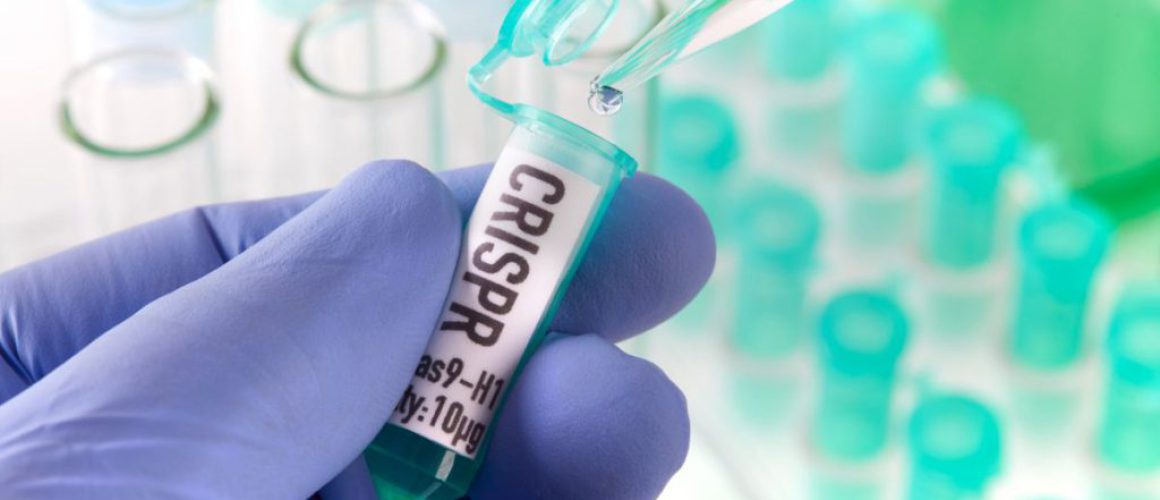Molecular and Therapeutic Effect of CRISPR in Cancer Treatment
Table of Contents
Introduction
I’m a medical technology student, and today I’m going to talk about a topic that’s been making waves in the scientific community – the use of CRISPR in treating cancer. If you’re interested in molecular biology, gene editing, or just want to know more about the latest advancements in cancer treatment, you’re in the right place.
In the world of molecular biology, few things have caused as much excitement as the development of CRISPR technology. This revolutionary gene-editing tool has the potential to change the face of medicine as we know it, particularly in the field of cancer treatment. But what exactly is CRISPR, and how can it be used to fight cancer? Let’s dive in and find out.
The journey we’re about to embark on is a fascinating one. It’s a journey that takes us into the heart of our cells, where the battle against cancer begins. It’s a journey that will reveal how we can harness the power of molecular biology to fight one of the deadliest diseases known to mankind.
What is CRISPR?
CRISPR, or Clustered Regularly Interspaced Short Palindromic Repeats, is a revolutionary gene-editing tool. It works like a pair of molecular scissors, allowing scientists to cut out, edit, or replace specific parts of the DNA sequence. This technology has opened up a world of possibilities in treating genetic diseases, including cancer.
The beauty of CRISPR lies in its simplicity and precision. It’s like having a word processor for our genes, where we can easily delete, replace, or add genetic material as needed. This level of control was unheard of just a few years ago, and it’s set to revolutionize the field of molecular biology.
But CRISPR isn’t just about editing genes. It’s about understanding the language of life itself. It’s about deciphering the genetic code that makes us who we are. And most importantly, it’s about using this knowledge to improve human health and fight diseases like cancer.

How Does CRISPR Work?
CRISPR works by using a protein called Cas9 that can cut DNA at a specific location. Scientists can program the Cas9 protein to target a specific part of the DNA sequence, allowing them to edit the genes in a precise manner. This precision is what makes CRISPR such a promising tool in the fight against cancer.
Imagine you’re reading a book, and you come across a typo. You’d probably wish you could just reach in, erase the mistake, and correct it. That’s essentially what CRISPR allows us to do, but with our genes. By programming the Cas9 protein, we can guide it to the exact location of the genetic “typo” causing a disease and correct it.
This ability to edit our genes with such precision has opened up new possibilities in the field of cancer treatment. By targeting the specific genetic mutations that cause cancer, we can potentially stop the disease in its tracks. This is a game-changer in the world of molecular biology and medical technology.
CRISPR and Cancer Treatment
Cancer is caused by mutations in the DNA that lead to uncontrolled cell growth. With CRISPR, scientists can target and edit these mutated genes, potentially stopping the cancer in its tracks. This could revolutionize cancer treatment, moving us away from traditional treatments like chemotherapy and radiation, which can have severe side effects.
The potential of CRISPR in cancer treatment is immense. By precisely targeting and editing the genes responsible for cancer, we canpotentially develop more effective and less harmful treatments. This is particularly important for cancers that are resistant to traditional treatments. With CRISPR, we could potentially turn the tide in the fight against these hard-to-treat cancers.
But it’s not just about treating cancer. CRISPR also holds promise in the field of cancer prevention. By editing the genes that increase the risk of developing cancer, we could potentially prevent the disease before it even starts. This is a revolutionary concept in cancer treatment and a testament to the power of molecular biology.
However, it’s important to note that while the potential of CRISPR in cancer treatment is immense, it’s still a relatively new technology. There’s still a lot we need to learn about the long-term effects of gene editing. But with ongoing research and clinical trials, the future of CRISPR in cancer treatment looks promising.
The Potential of CRISPR in Treating Genetic Diseases
But it’s not just cancer that CRISPR could help treat. There are thousands of genetic diseases caused by specific mutations in the DNA. With CRISPR, we could potentially edit these mutations, effectively curing these diseases. This could change the lives of millions of people suffering from genetic diseases worldwide.
Take, for example, cystic fibrosis, a genetic disease caused by a mutation in a single gene. This mutation leads to the production of a faulty protein, causing a buildup of thick mucus in the lungs and other organs. With CRISPR, we could potentially correct this mutation, curing the disease at its genetic root.
Similarly, CRISPR could be used to treat other genetic diseases like muscular dystrophy, sickle cell anemia, and Huntington’s disease. By correcting the genetic mutations that cause these diseases, we could potentially offer new hope to patients who currently have limited treatment options. This is the power of molecular biology and gene editing.
The Future of CRISPR
While CRISPR holds a lot of promise, it’s still a relatively new technology. There’s a lot we don’t know about the long-term effects of gene editing. But scientists are working hard to understand more about this technology and how we can use it safely and effectively. The future of CRISPR looks bright, and I, for one, am excited to see where it leads us.
The potential applications of CRISPR are almost limitless. Beyond treating cancer and genetic diseases, CRISPR could be used in everything from agriculture to biofuel production. It’s a tool that could reshape our world in ways we can’t even imagine yet.
But as with any powerful tool, CRISPR comes with its own set of challenges and ethical considerations. As we move forward, it’s crucial that we navigate these challenges responsibly, ensuring that CRISPR is used for the benefit of all. The journey ahead is an exciting one, and I can’t wait to see where it takes us.
Conclusion
CRISPR is a revolutionary tool that has the potential to change the way we treat cancer and other genetic diseases. While there’s still a lot we need to learn, the possibilities are truly exciting. As a medical technology student, I can’t wait to see how this technology evolves and how it will impact our lives.
This post is part of the Molecular Biology category and belongs to the series Molecular Biology: A Comprehensive Guide for Medical Technology
Also have a look at my other posts: Fundamentals of Molecular Biology: Decoding Life and Exploring the Use of Organoids in Cancer Biology
Disclaimer
This blog post is intended for informational purposes only. It is not meant to replace professional medical advice, diagnosis, or treatment. Always seek the advice of your physician or other qualified health provider with any questions you may have regarding a medical condition.
Frequently Asked Questions
What is CRISPR?
CRISPR, or Clustered Regularly Interspaced Short Palindromic Repeats, is a revolutionary gene-editing tool. It works like a pair of molecular scissors, allowing scientists to cut out, edit, or replace specific parts of the DNA sequence. This technology has opened up a world of possibilities in treating genetic diseases, including cancer.
How does CRISPR work in gene editing?
CRISPR works by using a protein called Cas9 that can cut DNA at a specific location. Scientists can program the Cas9 protein to target a specific part of the DNA sequence, allowing them to edit the genes in a precise manner. This precision is what makes CRISPR such a promising tool in the fight against cancer.
How can CRISPR be used in cancer treatment?
Cancer is caused by mutations in the DNA that lead to uncontrolled cell growth. With CRISPR, scientists can target and edit these mutated genes, potentially stopping the cancer in its tracks. This could revolutionize cancer treatment, moving us away from traditional treatments like chemotherapy and radiation, which can have severe side effects.
What is the potential of CRISPR in treating genetic diseases?
There are thousands of genetic diseases caused by specific mutations in the DNA. With CRISPR, we could potentially edit these mutations, effectively curing these diseases. This could change the lives of millions of people suffering from genetic diseases worldwide.
What is the future of CRISPR?
While CRISPR holds a lot of promise, it’s still a relatively new technology. There’s a lot we don’t know about the long-term effects of gene editing. But scientists are working hard to understand more about this technology and how we can use it safely and effectively. The future of CRISPR looks bright, and it’s exciting to see where it leads us.
Sources
- CRISPR: A game-changing genetic engineering technique: This source provides a comprehensive overview of what CRISPR is and how it works. It supports the sections in the article that explain the basics of CRISPR and its function as a gene-editing tool.
- CRISPR gene editing in cancer: This scientific paper discusses the potential of CRISPR in cancer treatment, including its ability to target and edit mutated genes. It provides the scientific backing for the sections in the article that discuss the application of CRISPR in cancer treatment.
- CRISPR: The revolutionary gene-editing tech explained: This source offers a layman’s explanation of CRISPR and its potential applications, including its potential in treating genetic diseases. It supports the sections in the article that discuss the potential of CRISPR in treating genetic diseases and the future of CRISPR.
This post is part of my series on Molecular Biology.
Also check out my other posts in this series: Fundamentals of Molecular Biology: Decoding Life and The Role of Biochemistry and Molecular Biology Techniques in Understanding Genetic Disorders
Sean Schepers is a third-year Medical Technology student at Mahidol University with a passion for all things health and medicine. His journey into the world of medicine has led him to explore various fields. Sean's blog posts offer a unique perspective, combining his academic insights with personal experiences. When he's not studying or blogging, Sean enjoys keeping up with politics and planning his future career in medicine.
In addition to his studies, Sean serves as the chairman of the Rights, Liberties, and Welfare Committee, a role that reflects his commitment to advocacy and social justice. Beyond his academic pursuits, Sean offers tutoring services in English and Biology, further demonstrating his dedication to education and mentorship. His journey is one of continuous discovery, and he invites others to join him as he explores the dynamic and transformative world of medical technology.


